 W
WThe presidency of John Adams, began on March 4, 1797, when John Adams was inaugurated as the second President of the United States, and ended on March 4, 1801. Adams, who had served as vice president under George Washington, took office as president after winning the 1796 presidential election. The only member of the Federalist Party to ever serve as president, his presidency ended after a single term following his defeat in the 1800 presidential election. He was succeeded by Thomas Jefferson of the Democratic-Republican Party.
 W
WThe presidency of John Quincy Adams, began on March 4, 1825, when John Quincy Adams was inaugurated as President of the United States, and ended on March 4, 1829. Adams, the sixth United States president, took office following the 1824 presidential election, in which he and three other Democratic-Republicans—Henry Clay, William H. Crawford, and Andrew Jackson—sought the presidency. There was no preliminary party primary six months before the general election, as became the custom. No candidate won a majority of Electoral College votes, and so the United States House of Representatives chose the president in a contingent election. With the help of Clay, Adams was elected by the House, and Clay became Adams's Secretary of State. His presidency ended following his defeat in the 1828 presidential election by Jackson.
 W
WChester A. Arthur's term as the president of the United States began on September 19, 1881, when he succeeded to the presidency upon the assassination of President James A. Garfield, and ended on March 4, 1885. Arthur, a Republican, had been vice president for 199 days when he succeeded to the presidency. In ill health and lacking the full support of his party by the end of his term, Arthur made only a token effort for the Republican presidential nomination in the 1884 presidential election. He was succeeded by Democrat Grover Cleveland.
 W
WJoe Biden was inaugurated as the 46th president of the United States at noon EST on January 20, 2021. A Democrat from Delaware, he took office following the 2020 presidential election, in which he defeated incumbent Donald Trump. He is accompanied in office by Vice President Kamala Harris, the first woman, first African American, and first Asian American to hold that office. Biden entered office amid the COVID-19 pandemic, the worst infectious disease outbreak to affect the U.S. in a century, as well an accompanying economic crisis and increased political polarization.
 W
WThe presidency of James Buchanan began on March 4, 1857, when James Buchanan was inaugurated as President of the United States, and ended on March 4, 1861. Buchanan, a Democrat from Pennsylvania, took office as the 15th United States president after defeating former President Millard Fillmore of the American Party, and John C. Frémont of the Republican Party in the 1856 presidential election.
 W
WGeorge H. W. Bush's tenure as the 41st president of the United States began with his inauguration on January 20, 1989, and ended on January 20, 1993. Bush, a Republican from Texas and the incumbent vice president of the United States, took office after a landslide victory over Democrat Michael Dukakis in the 1988 presidential election. His presidency ended following his defeat in the 1992 presidential election by Democrat Bill Clinton. Bush, the 41st president, is the father of the 43rd president, George W. Bush.
 W
WGeorge W. Bush's tenure as the 43rd president of the United States from his first inauguration on January 20, 2001, and ended on January 20, 2009. Bush, a Republican from Texas, took office following a narrow victory over Democratic incumbent vice president Al Gore in the 2000 presidential election. Four years later, in the 2004 presidential election, he defeated Democrat nominee John Kerry to win re-election. Bush was succeeded by Democrat Barack Obama, who won the 2008 presidential election. Bush, the 43rd president, is the eldest son of the 41st president, George H. W. Bush.
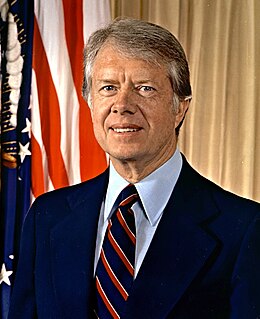 W
WJimmy Carter's tenure as the 39th president of the United States began with his inauguration on January 20, 1977, and ended on January 20, 1981. Carter, a Democrat from Georgia, took office after defeating incumbent Republican President Gerald Ford in the 1976 presidential election. His presidency ended following his defeat in the 1980 presidential election by Republican Ronald Reagan.
 W
WGrover Cleveland was the president of the United States first from March 4, 1885 to March 4, 1889, and then from March 4, 1893 to March 4, 1897. The first Democrat elected after the Civil War, Cleveland is the only US president to leave office after one term and later return for a second term. His presidencies were the nation's 22nd and 24th. Cleveland defeated James G. Blaine of Maine in 1884, lost to Benjamin Harrison of Indiana in 1888, and then defeated President Harrison in 1892.
 W
WBill Clinton's tenure as the 42nd president of the United States began with his first inauguration on January 20, 1993, and ended on January 20, 2001. Clinton, a Democrat from Arkansas, took office following a decisive victory over Republican incumbent president George H. W. Bush and independent businessman Ross Perot in the 1992 presidential election. Four years later, in the 1996 presidential election, he defeated Republican nominee Bob Dole and Reform Party businessman Ross Perot to win re-election. Clinton was succeeded by Republican George W. Bush, who won the 2000 presidential election.
 W
WCalvin Coolidge's tenure as the 30th president of the United States began on August 2, 1923, when Coolidge became president upon his predecessor's death, and ended on March 4, 1929. A Republican from Massachusetts, Coolidge had been vice president for 2 years, 151 days when he succeeded to the presidency upon the sudden death of Warren G. Harding. Elected to a full four–year term in 1924, Coolidge gained a reputation as a small-government conservative. Coolidge was succeeded by former Secretary of Commerce Herbert Hoover after the 1928 presidential election.
 W
WDwight D. Eisenhower's tenure as the 34th president of the United States began on his inauguration on January 20, 1953, and ended on January 20, 1961. Eisenhower, a Republican, took office as president following his victory over Democrat Adlai Stevenson in the 1952 presidential election. John F. Kennedy succeeded him after winning the 1960 presidential election.
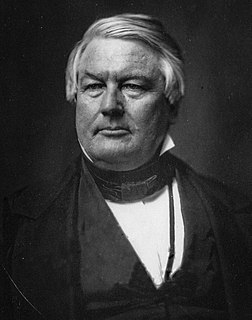 W
WThe presidency of Millard Fillmore began on July 9, 1850, when Millard Fillmore became President of the United States upon the death of Zachary Taylor, and ended on March 4, 1853. Fillmore had been Vice President of the United States for 1 year, 4 months when he became the 13th United States president. Fillmore was the second president to succeed to the office without being elected to it, after John Tyler, as well as the last Whig president. His presidency ended after losing the Whig nomination at the 1852 Whig National Convention. Fillmore was succeeded by Democrat Franklin Pierce.
 W
WGerald Ford's tenure as the 38th president of the United States began on August 9, 1974, upon the resignation of Richard Nixon from office, and ended on January 20, 1977, a period of 895 days. Ford, a Republican from Michigan, had served as vice president since December 6, 1973, following Spiro Agnew's resignation from that office. Ford has the distinction of being the only person to serve as president without being elected to either the presidency or the vice presidency. His presidency ended following his defeat in the 1976 presidential election by Democrat Jimmy Carter.
 W
WJames Abram Garfield was the 20th president of the United States, serving from March to September 1881. Garfield was shot by an assassin four months into his presidency and died two months later. He is the only sitting member of the United States House of Representatives to be elected to the presidency.
 W
WThe presidency of Ulysses S. Grant began on March 4, 1869, when Grant was inaugurated as the 18th President of the United States, and ended on March 4, 1877.
 W
WWarren G. Harding's tenure as the 29th president of the United States lasted from March 4, 1921 until his death on August 2, 1923. Harding presided over the country in the aftermath of World War I. A Republican from Ohio, Harding held office during a period in American political history from the mid-1890s to 1932 that was generally dominated by his party. He died of an apparent heart attack and was succeeded by Vice President Calvin Coolidge.
 W
WBenjamin Harrison's term as the president of the United States lasted from March 4, 1889, until March 4, 1893. Harrison, a Republican, took office as the 23rd United States president after defeating Democratic incumbent President Grover Cleveland in the 1888 election. Four years later he was defeated for re-election by Cleveland in the 1892 presidential election. Harrison is the only president to be preceded and succeeded by the same individual. Harrison is also the only president to be the grandson of another president.
 W
WWilliam Henry Harrison was an American military officer and politician who served as the ninth president of the United States for 31 days in 1841, becoming the first president to die in office and the shortest-serving U.S. president in history. His death sparked a brief constitutional crisis regarding succession to the presidency, as at the time the constitution did not make it entirely clear what should be done in the event of the death of the president.
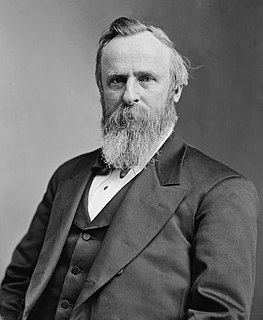 W
WThe presidency of Rutherford B. Hayes began on March 4, 1877, when Rutherford B. Hayes was inaugurated as President of the United States, and ended on March 4, 1881. Hayes became the 19th president, after being awarded the closely contested 1876 presidential election by Republicans in Congress who agreed to the Compromise of 1877. That Compromise promised to pull federal troops out of the South, thus ending Reconstruction. He refused to seek re-election and was succeeded by James A. Garfield, a fellow Republican and ally.
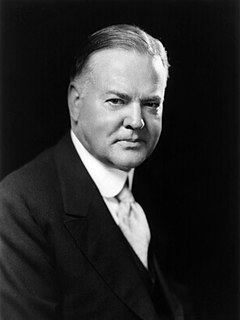 W
WHerbert Hoover's tenure as the 31st president of the United States began on his inauguration on March 4, 1929, and ended on March 4, 1933. Hoover, a Republican, took office after a landslide victory in the 1928 presidential election over Democrat Al Smith of New York. His presidency ended following his defeat in the 1932 presidential election by Democrat Franklin D. Roosevelt.
 W
WThe presidency of Andrew Jackson began on March 4, 1829, when Andrew Jackson was inaugurated as President of the United States, and ended on March 4, 1837. Jackson, the seventh United States president, took office after defeating incumbent President John Quincy Adams in the bitterly contested 1828 presidential election. During the 1828 presidential campaign, Jackson founded the political force that coalesced into the Democratic Party during Jackson's presidency. Jackson won re-election in 1832, defeating National Republican candidate Henry Clay by a wide margin. He was succeeded by his hand-picked successor, Vice President Martin Van Buren, after Van Buren won the 1836 presidential election.
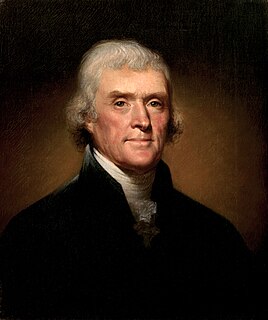 W
WThe presidency of Thomas Jefferson began on March 4, 1801, when he was inaugurated as the third President of the United States, and ended on March 4, 1809. Jefferson assumed the office after defeating incumbent President John Adams in the 1800 presidential election. The election was a political realignment in which the Democratic-Republican Party swept the Federalist Party out of power, ushering in a generation of Democratic-Republican dominance in American politics. After serving two terms, Jefferson was succeeded by Secretary of State James Madison, also of the Democratic-Republican Party.
 W
WThe presidency of Andrew Johnson began on April 15, 1865, when Andrew Johnson became President of the United States upon the assassination of President Abraham Lincoln, and ended on March 4, 1869. He had been Vice President of the United States for only 42 days when he succeeded to the presidency. The 17th United States president, Johnson was a member of the Democratic Party before the Civil War and had been Lincoln's 1864 running mate on the National Union ticket, which was supported by Republicans and War Democrats. Johnson took office as the Civil War came to a close, and his presidency was dominated by the aftermath of the war. As president, Johnson attempted to build his own party of Southerners and conservative Northerners, but he was unable to unite his supporters into a new party. Republican Ulysses S. Grant succeeded Johnson as president.
 W
WLyndon B. Johnson's tenure as the 36th president of the United States began on November 22, 1963, when he succeeded the assassinated President John F. Kennedy, and ended on January 20, 1969. He had been vice president for 1,036 days when he succeeded to the presidency. A Democrat from Texas, he ran for and won a full four-year term in the 1964 election, winning in a landslide over Republican opponent Arizona Senator Barry Goldwater. Johnson did not run for a second full term in the 1968 presidential election. He was succeeded by Republican Richard Nixon. His presidency marked the high tide of modern liberalism in the United States.
 W
WJohn F. Kennedy's tenure as the 35th president of the United States, began with his inauguration on January 20, 1961, and ended with his assassination on November 22, 1963. A Democrat from Massachusetts, he took office following the 1960 presidential election, in which he narrowly defeated Richard Nixon, the then-incumbent vice president. He was succeeded by Vice President Lyndon B. Johnson.
 W
WThe presidency of Abraham Lincoln began on March 4, 1861, when Abraham Lincoln was inaugurated as the 16th president of the United States, and ended upon his assassination and death on April 15, 1865, 42 days into his second term. Lincoln was the first member of the recently established Republican Party elected to the presidency. He was succeeded by Vice President Andrew Johnson. Lincoln presided over the Union victory in the American Civil War, which dominated his presidency.
 W
WThe presidency of James Madison began on March 4, 1809, when James Madison was inaugurated as President of the United States, and ended on March 4, 1817. Madison, the fourth United States president, took office after defeating Federalist Charles Cotesworth Pinckney decisively in the 1808 presidential election. He was re-elected four years later, defeating DeWitt Clinton in the 1812 election. His presidency was dominated by the War of 1812 with Britain. Madison was succeeded by Secretary of State James Monroe, a fellow member of the Democratic-Republican Party.
 W
WThe presidency of William McKinley began on March 4, 1897, when William McKinley was inaugurated and ended September 14, 1901, upon his assassination. He is best known for conducting the Spanish–American War (1898), taking ownership of the Republic of Hawaii, purchasing the Philippines, Guam and Puerto Rico. It includes the 1897 Dingley Tariff to protect manufacturers and factory workers from foreign competition, and the Gold Standard Act of 1900 that rejected free silver inflationary proposals. Rapid economic growth and a decline in labor conflict also marked the presidency.
 W
WThe presidency of James Monroe began on March 4, 1817, when James Monroe was inaugurated as President of the United States, and ended on March 4, 1825. Monroe, the fifth United States president, took office after winning the 1816 presidential election by an overwhelming margin over Federalist Rufus King. This election was the last in which the Federalists fielded a presidential candidate, and Monroe was unopposed in the 1820 presidential election. A member of the Democratic-Republican Party, Monroe was succeeded by Secretary of State John Quincy Adams.
 W
WRichard Nixon's tenure as the 37th president of the United States began with his first inauguration on January 20, 1969, and ended when he resigned on August 9, 1974, in the face of almost certain impeachment and removal from office, the only U.S. president ever to do so. He was succeeded by Gerald Ford, whom he had appointed vice president after Spiro Agnew became embroiled in a separate corruption scandal and was forced to resign. A prominent member of the Republican Party from California, Nixon took office after the 1968 presidential election, in which he defeated incumbent Vice President Hubert Humphrey. Although he had built his reputation as a very active Republican campaigner, Nixon downplayed partisanship in his 1972 landslide reelection.
 W
WBarack Obama's tenure as the 44th president of the United States from his first inauguration on January 20, 2009, and ended on January 20, 2017. Obama, a Democrat from Illinois, took office following a decisive victory over Republican nominee John McCain in the 2008 presidential election. Four years later, in the 2012 presidential election, he defeated Republican nominee Mitt Romney to win re-election. Obama was succeeded by Republican Donald Trump, who won the 2016 presidential election. He was the first African American president, the first multiracial president, the first non-white president, and the first president to have been born in Hawaii.
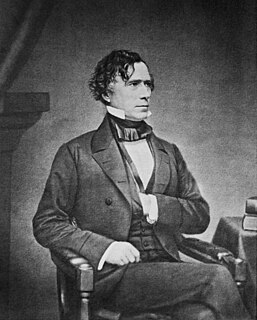 W
WThe presidency of Franklin Pierce began on March 4, 1853, when Franklin Pierce was inaugurated as President of the United States, and ended on March 4, 1857. Pierce, a Democrat from New Hampshire, took office as the 14th United States president after routing Whig Party nominee Winfield Scott in the 1852 presidential election. Seen by fellow Democrats as pleasant and accommodating to all the party's factions, Pierce, then a little-known politician, won the presidential nomination on the 49th ballot of the 1852 Democratic National Convention. His presidency ended after losing the Democratic nomination at the 1856 Democratic National Convention.
 W
WThe presidency of James K. Polk began on March 4, 1845, when James K. Polk was inaugurated as President of the United States, and ended on March 4, 1849. He was a Democrat, and assumed office after defeating Whig Henry Clay in the 1844 presidential election. Polk left office after one term, fulfilling a campaign pledge he made in 1844, and he was succeeded by Whig Zachary Taylor. A close ally of Andrew Jackson, Polk's presidency reflected his adherence to the ideals of Jacksonian democracy and manifest destiny.
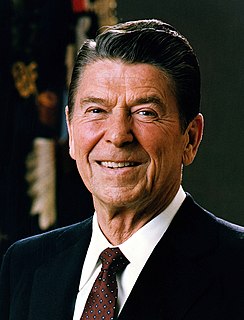 W
WRonald Reagan's tenure as the 40th president of the United States lasted from his first inauguration on January 20, 1981, until January 20, 1989. Reagan, a Republican from California, took office following a landslide victory over Democratic incumbent President Jimmy Carter in the 1980 presidential election. Four years later, in the 1984 election, he defeated Democrat Walter Mondale to win re-election in a larger landslide. Reagan was succeeded by his vice president, George H. W. Bush, who won the 1988 presidential election with Reagan's support. Reagan's 1980 election resulted from a dramatic conservative shift to the right in American politics, including a loss of confidence in liberal, New Deal, and Great Society programs and priorities that had dominated the national agenda since the 1930s.
 W
WThe first term of the presidency of Franklin D. Roosevelt began on March 4, 1933, when he was inaugurated as the 32nd president of the United States, and the second term of his presidency ended on January 20, 1941, with his inauguration to a third term. Roosevelt, the Democratic governor of the largest state, New York, took office after defeating President Herbert Hoover, his Republican opponent in the 1932 presidential election. Roosevelt led the implementation of the New Deal, a series of programs designed to provide relief, recovery, and reform to Americans and the American economy during the Great Depression. He also presided over a realignment that made his New Deal Coalition of labor unions, big city machines, white ethnics, African Americans, and rural white Southerners dominant in national politics until the 1960s and defined modern American liberalism.
 W
WThe third presidential term of Franklin D. Roosevelt began on January 20, 1941, when he was once again inaugurated as the 32nd president of the United States, and the fourth term of his presidency ended with his death on April 12, 1945. Roosevelt won a third term by defeating Republican nominee Wendell Willkie in the 1940 United States presidential election. He remains the only president to serve for more than two terms. Unlike his first two terms, Roosevelt's third and fourth terms were dominated by foreign policy concerns, as the United States became a belligerent in World War II in December 1941.
 W
WThe presidency of Theodore Roosevelt started on September 14, 1901, when Theodore Roosevelt became the 26th President of the United States upon the assassination of President William McKinley, and ended on March 4, 1909. Roosevelt had been the Vice President of the United States for only 194 days when he succeeded to the presidency. A Republican, he ran for and won by a landslide a four-year term as president in 1904. He was succeeded by his protégé and chosen successor, William Howard Taft.
 W
WThe presidency of William Howard Taft began on March 4, 1909, when William Howard Taft was inaugurated as President of the United States, and ended on March 4, 1913. Taft, a Republican from Ohio, was the 27th United States president. The protégé and chosen successor of President Theodore Roosevelt, he took office after easily defeating Democrat William Jennings Bryan in the 1908 presidential election. His presidency ended with his defeat in the 1912 election by Democrat Woodrow Wilson.
 W
WZachary Taylor was an American military leader who served as the 12th president of the United States from 1849 until his death in 1850. Taylor previously was a career officer in the United States Army, rose to the rank of major general and became a national hero as a result of his victories in the Mexican–American War. As a result, he won election to the White House despite his vague political beliefs. His top priority as president was preserving the Union. He died sixteen months into his term, having made no progress on the most divisive issue in Congress, slavery.
 W
WHarry S. Truman's tenure as the 33rd president of the United States began on April 12, 1945, when Truman became president on his predecessor's death, and ended on January 20, 1953. He had been vice president for only 82 days when he succeeded to the presidency upon the death of Franklin D. Roosevelt. A Democrat from Missouri, he ran for and won a full four–year term in the 1948 election. Although exempted from the newly-ratified Twenty-second Amendment, Truman did not run again in the 1952 election because of his low popularity. He was succeeded by Republican Dwight D. Eisenhower who had attacked Truman's failures.
 W
WDonald Trump's tenure as the 45th president of the United States began with his inauguration on January 20, 2017 and ended on January 20, 2021. Trump, a Republican originally from New York City, took office following his Electoral College victory over Democratic nominee Hillary Clinton in the 2016 presidential election, in which he did not win a plurality of the popular vote. Trump made an unprecedented number of false or misleading statements during his campaign and presidency. His presidency ended with his defeat in the 2020 presidential election by Democrat Joe Biden. It was the first presidency since that of Herbert Hoover in which a president was not reelected and his party lost its majorities in both chambers of Congress.
 W
WThe presidency of John Tyler began on April 4, 1841, when John Tyler became President of the United States upon the death of President William Henry Harrison, and ended on March 4, 1845. He had been Vice President of the United States for only 31 days when he assumed the presidency. The tenth United States president, he was the first to succeed to the office intra-term without being elected to it. To forestall constitutional uncertainty, Tyler took the presidential oath of office on April 6, moved into the White House, and assumed full presidential powers, a precedent that would govern future extraordinary successions and eventually become codified in the Twenty-fifth Amendment.
 W
WThe presidency of Martin Van Buren began on March 4, 1837, when Martin Van Buren was inaugurated as President of the United States, and ended on March 4, 1841. Van Buren, the incumbent Vice President and chosen successor of President Andrew Jackson, took office as the eighth United States president after defeating multiple Whig Party candidates in the 1836 presidential election. A member of the Democratic Party, Van Buren's presidency ended following his defeat by Whig candidate William Henry Harrison in the 1840 presidential election.
 W
WThe presidency of George Washington began on April 30, 1789, when Washington was inaugurated as the first president of the United States, and ended on March 4, 1797. Washington took office after the 1788–89 presidential election, the nation's first quadrennial presidential election, in which he was elected unanimously. Washington was re-elected unanimously in the 1792 presidential election, and chose to retire after two terms. He was succeeded by his vice president, John Adams of the Federalist Party.
 W
WWoodrow Wilson's tenure as the 28th president of the United States, lasted from March 4, 1913, until March 4, 1921. Wilson, a Democrat who previously served as the governor of New Jersey, became president after winning the 1912 election, gaining a large majority in the Electoral College and a 42% plurality of the popular vote in a four–candidate field. Wilson was re-elected in 1916, defeating Republican Charles Evans Hughes by a fairly narrow margin. He was the first Southerner to be elected president since Zachary Taylor in 1848, and just the second Democrat to be elected president since 1860.